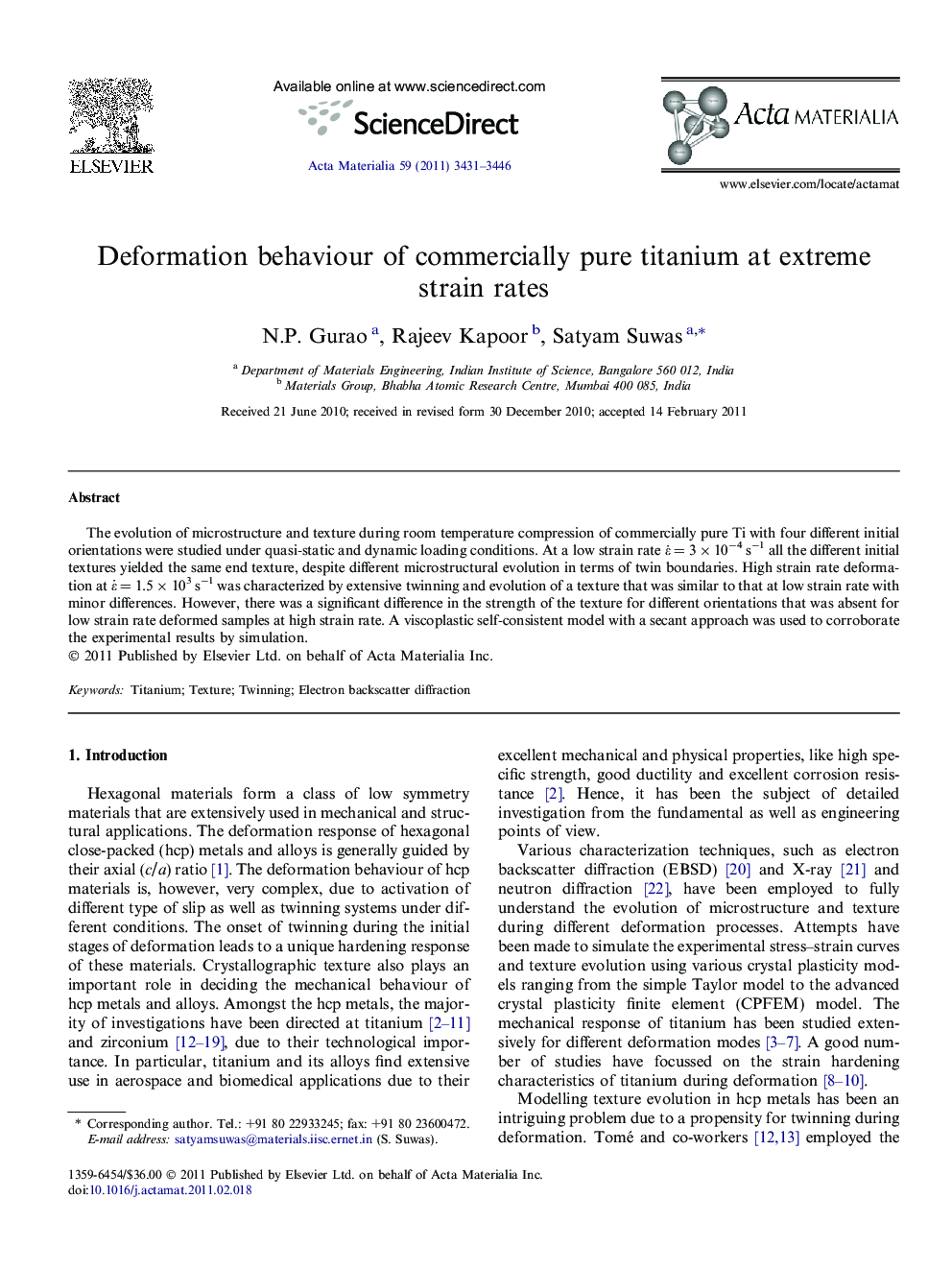| Article ID | Journal | Published Year | Pages | File Type |
|---|---|---|---|---|
| 1447142 | Acta Materialia | 2011 | 16 Pages |
The evolution of microstructure and texture during room temperature compression of commercially pure Ti with four different initial orientations were studied under quasi-static and dynamic loading conditions. At a low strain rate ε˙ = 3 × 10−4 s−1 all the different initial textures yielded the same end texture, despite different microstructural evolution in terms of twin boundaries. High strain rate deformation at ε˙ = 1.5 × 103 s−1 was characterized by extensive twinning and evolution of a texture that was similar to that at low strain rate with minor differences. However, there was a significant difference in the strength of the texture for different orientations that was absent for low strain rate deformed samples at high strain rate. A viscoplastic self-consistent model with a secant approach was used to corroborate the experimental results by simulation.
Research highlights► Deformation texture is weaker for high strain rate deformation. ► Basal oriented sample undergoes minimum twinning and exhibits least hardening. ► Difference in hardening for different orientations reduces at high strain rate. ► Basal slip is active during the course of deformation. ► Extent of slip is more than twinning at all strain rates for all orientations.
